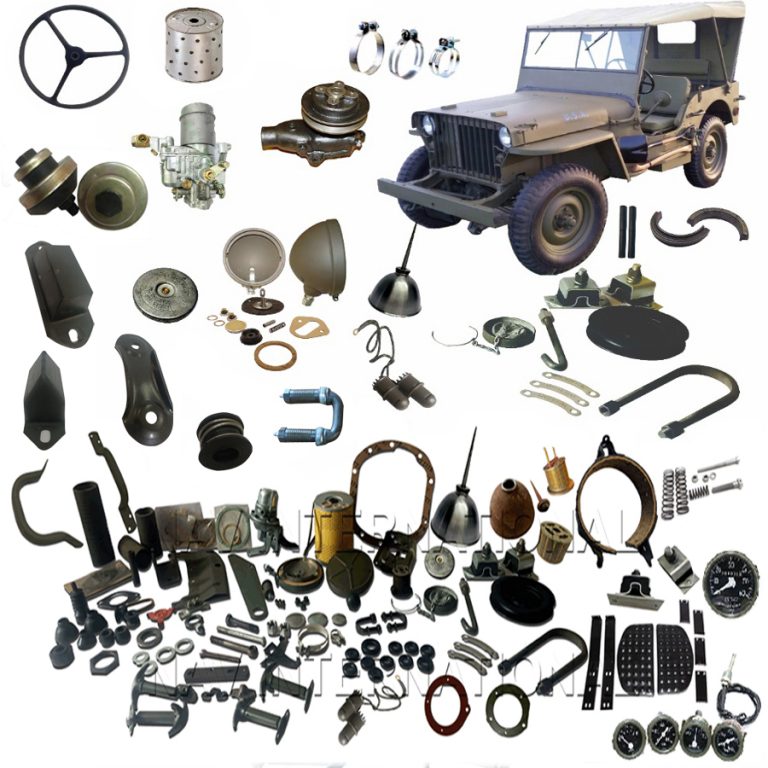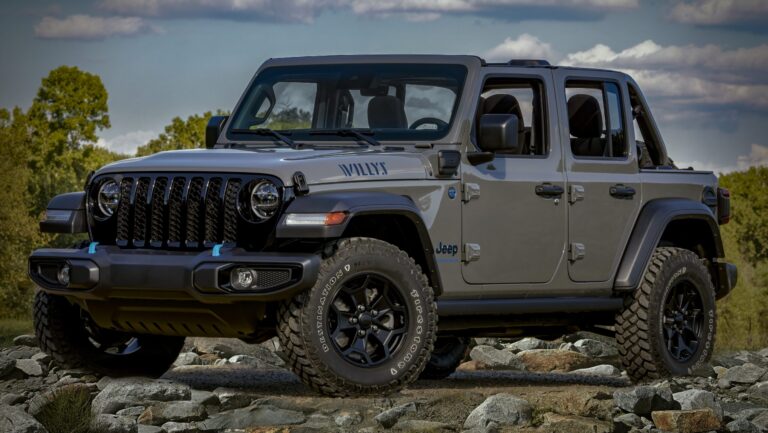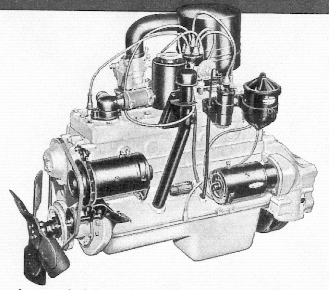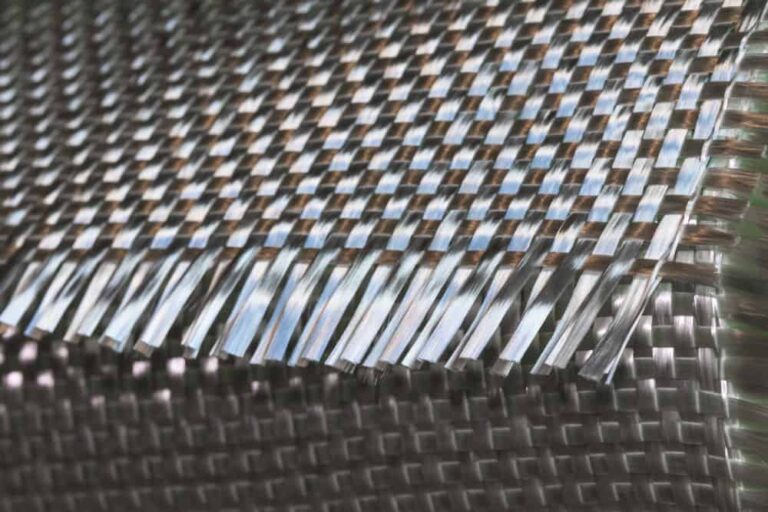Vintage Jeep Parts For Sale: Your Ultimate Guide to Restoring a Legend
Vintage Jeep Parts For Sale: Your Ultimate Guide to Restoring a Legend jeeps.truckstrend.com
The rumble of a classic flathead engine, the iconic seven-slot grille, the unmistakable silhouette traversing rugged terrain – the allure of a vintage Jeep is undeniable. More than just vehicles, these machines are a testament to American ingenuity, durability, and a spirit of adventure. For enthusiasts, collectors, and restorers, owning a vintage Jeep is a journey back in time, a tangible piece of history that continues to inspire. However, keeping these legends alive requires a dedicated pursuit: the hunt for Vintage Jeep Parts For Sale.
This comprehensive guide is designed to navigate the intricate world of acquiring parts for your beloved classic. Whether you’re embarking on a full frame-off restoration, seeking to repair a cherished family heirloom, or simply aiming to maintain its rugged functionality, understanding the landscape of vintage Jeep parts is paramount. It’s a quest that demands patience, knowledge, and a keen eye, but the reward of seeing a piece of automotive history roaring back to life is truly unparalleled. From rare OEM components to reliable reproduction parts, we’ll delve into every aspect of securing what you need to keep your vintage Jeep rolling for generations to come.
Vintage Jeep Parts For Sale: Your Ultimate Guide to Restoring a Legend
Defining "Vintage": Which Jeeps Qualify for the Parts Hunt?
Before diving into the parts themselves, it’s essential to understand what constitutes a "vintage" Jeep. While definitions can vary slightly among purists and enthusiasts, generally, vintage Jeeps refer to models produced before 1986, primarily those under the Willys-Overland, Kaiser-Jeep, or early AMC-Jeep banners. The most common vintage models include:
- Willys MB & Ford GPW (WWII Era): The original "Jeep," the workhorse that started it all.
- Willys CJ-2A, CJ-3A, CJ-3B (Post-War Civilian Jeeps): The early civilian models that laid the groundwork for the brand’s enduring popularity.
- Jeep CJ-5 & CJ-6 (1955-1983): Iconic, rugged, and widely popular models known for their short wheelbase and enduring design.
- Jeep CJ-7 & CJ-8 Scrambler (1976-1986): The last of the "true" CJs, offering more modern features while retaining the classic Jeep character.
- Jeep Wagoneer (SJ) & Cherokee (SJ) (1963-1991): The pioneering luxury SUVs that set the standard for the segment.
- Jeep Gladiator & J-Series Pickups (1962-1988): Robust and capable trucks built on the Wagoneer platform.

While later models like the early YJ Wranglers or XJ Cherokees might begin to be considered "classic" or "collectible," the term "vintage parts" typically focuses on the pre-AMC era vehicles, where original components are significantly scarcer and specialized knowledge is often required for sourcing. Identifying your specific model year and trim is crucial, often requiring a deep dive into your vehicle’s VIN or serial number, as parts compatibility can vary even within the same model line.
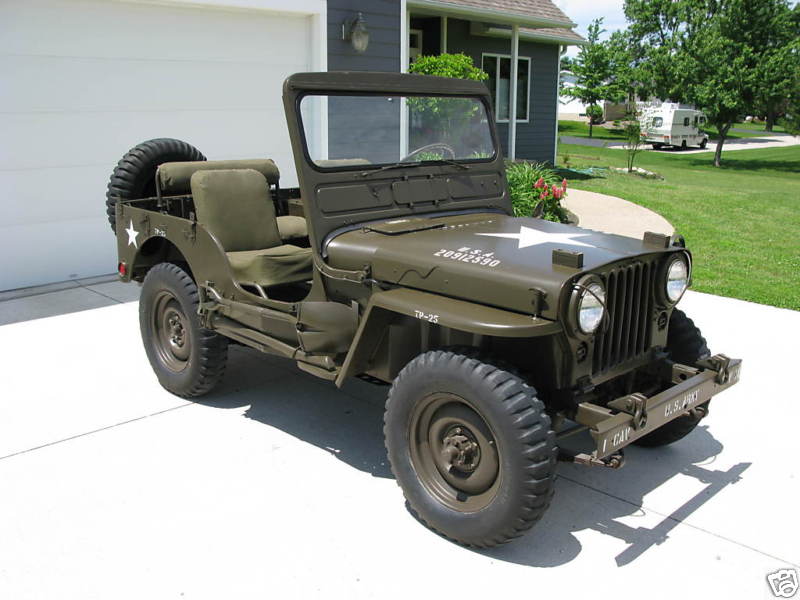
Why the Relentless Pursuit? The Importance of Vintage Jeep Parts
The hunt for vintage Jeep parts is driven by a multifaceted passion for these enduring machines. Understanding why these parts are so sought after sheds light on the dedication of the vintage Jeep community:
- Authentic Restoration Projects: For many, the goal is to restore a vintage Jeep to its original, factory-correct condition. This requires original equipment manufacturer (OEM) parts, period-correct components, and meticulous attention to detail to preserve the vehicle’s historical integrity and value.
- Repair and Maintenance: Beyond full restorations, vintage Jeeps are often cherished daily drivers or weekend warriors. When a component fails, finding a suitable replacement – whether original or reproduction – is essential to keep these functional vehicles on the road and trail.
- Preserving History and Legacy: Each vintage Jeep is a tangible piece of automotive history. Sourcing and installing correct parts contributes to the preservation of these iconic vehicles, ensuring they can be admired and enjoyed by future generations.
- Nostalgia and Personal Connection: Many owners have a deep personal connection to their vintage Jeep, perhaps passed down through family or representing a bygone era they cherish. The parts hunt becomes an integral part of this sentimental journey.
- Investment Value: Well-restored vintage Jeeps, especially rare or iconic models, can appreciate significantly in value. Using authentic or high-quality reproduction parts is key to maximizing this investment.

The Spectrum of Vintage Jeep Parts: Types and Categories
Navigating the market for vintage Jeep parts requires understanding the different types available and their implications for your project:
- OEM (Original Equipment Manufacturer) Parts: These are the holy grail. Parts originally manufactured by Willys, Kaiser, AMC, or their direct suppliers. They offer perfect fitment and historical accuracy. They are often incredibly rare and command premium prices.
- NOS (New Old Stock) Parts: These are OEM parts that were manufactured years ago but never sold or used. They are brand new, often still in their original packaging, and are highly prized for their untouched condition and authenticity. Like OEM, they are scarce and expensive.
- Reproduction Parts: Newly manufactured parts designed to original specifications. The quality of reproduction parts varies widely. Some are excellent, meeting or exceeding original standards, while others may require modification for proper fitment or might not be as durable. They are generally more accessible and affordable than OEM/NOS.
- Used/Salvaged Parts: Components pulled from donor vehicles or found in salvage yards. Their condition can range from "barely usable" to "excellent, just needs cleaning." They are often the most affordable option but require careful inspection for wear, damage, or hidden flaws.
- Aftermarket Upgrades (Period-Correct): While not original, these are components that would have been available as upgrades or accessories during the vehicle’s production era. Examples include specific winches, roll bars, or suspension components that enhance functionality while maintaining a period-correct aesthetic.
Parts can be broadly categorized by vehicle system:
- Body & Frame: Fenders, hoods, grilles, tailgates, tubs, frame sections, mounting brackets.
- Engine & Drivetrain: Carburetors, fuel pumps, water pumps, engine blocks, cylinder heads, transmission components, transfer cases, axle shafts, differentials.
- Interior: Seats, dashboards, gauges, steering wheels, door panels, shifters.
- Electrical: Wiring harnesses, alternators, generators, starters, lights, switches.
- Suspension & Steering: Leaf springs, shock absorbers, steering boxes, tie rods, knuckles.
- Braking System: Master cylinders, wheel cylinders, brake drums, lines.
- Accessories: Hubcaps, mirrors, heaters, wipers, tops (soft or hard).
Where to Find Your Treasure: Top Sources for Vintage Jeep Parts
The quest for vintage Jeep parts can lead you down many paths. Here are the most effective places to begin your search:
- Specialized Vintage Jeep Parts Dealers: Several reputable businesses focus exclusively on vintage Jeep parts. They often stock a mix of NOS, reproduction, and quality used parts. These dealers usually have deep knowledge and can offer expert advice. Examples include Omix-ADA, Kaiser Willys Auto Supply, Walck’s 4WD, and similar regional specialists.
- Online Marketplaces:
- eBay: A vast repository of new, used, and NOS parts. Be diligent with searches, read descriptions carefully, and check seller ratings.
- Craigslist/Facebook Marketplace: Great for local finds, especially larger items like body tubs or engines. Always inspect in person if possible.
- Dedicated Forums & Online Communities: Websites like EarlyCJ5.com, CJ-2A.com, or specific Facebook groups for vintage Jeep models are invaluable. Members often buy, sell, and trade parts, and the community knowledge is immense.
- Swap Meets & Car Shows: Events like the Bantam Jeep Heritage Festival, Toledo Jeep Fest, or local classic car swap meets are treasure troves. You can see parts in person, negotiate, and network with other enthusiasts.
- Salvage Yards/Junkyards: While increasingly rare for truly vintage models, some older salvage yards might still house forgotten gems. This requires patience, a willingness to get dirty, and knowledge of what you’re looking for.
- Networking & Word-of-Mouth: Talk to other vintage Jeep owners, mechanics specializing in older vehicles, and local restoration shops. Often, the best parts are found through personal connections.
- Custom Fabricators & Machine Shops: For extremely rare or unobtainable parts, a skilled fabricator or machinist might be able to create a custom replacement or repair an existing part.
Key Considerations When Buying Vintage Jeep Parts
To ensure a successful and satisfying purchase, keep these critical factors in mind:
- Authenticity vs. Functionality vs. Budget: Prioritize your needs. Is it a show vehicle requiring pristine OEM, or a trail rig needing reliable functionality? Your budget will often dictate the choice between NOS, reproduction, or used.
- Condition Assessment: This is paramount for used parts. Ask for detailed photos or videos from multiple angles. Look for rust, cracks, bends, pitting, excessive wear, or previous repairs. For electrical components, inquire about functionality.
- Compatibility: Double-check part numbers against your vehicle’s specifications. Small year-to-year changes can mean a part from an ’81 CJ-7 won’t fit an ’82. VIN decoder tools and factory parts manuals are your best friends here.
- Seller Reputation: Buy from reputable dealers or sellers with positive reviews. For private sales, gauge their knowledge and willingness to answer questions thoroughly.
- Shipping Logistics & Costs: Large or heavy parts can incur significant shipping fees. Factor this into your total cost. Ensure proper packaging for fragile items and consider shipping insurance.
- Return Policies: Understand the seller’s return policy, especially for online purchases. If a part isn’t as described or doesn’t fit, you’ll want recourse.
- Beware of Scams: Be cautious of deals that seem too good to be true, especially from unverified sellers. Never send money via unsecured methods.
Practical Advice and Actionable Insights for Your Parts Hunt
- Start with Research: Before you buy, know exactly what you need. Get the correct part number, understand its function, and research common issues. Factory service manuals and parts catalogs are invaluable.
- Be Patient and Persistent: The perfect part might not appear overnight. Set up search alerts on eBay, regularly check forums, and keep networking.
- Build Relationships: Cultivate connections with specialized dealers and fellow enthusiasts. They can be a wealth of information and potential part sources.
- Inspect Thoroughly (Even New Parts): Even reproduction parts can have manufacturing flaws. Always inspect before installation.
- Consider Restoration of Existing Parts: Sometimes, repairing or refurbishing an original part (e.g., rebuilding a carburetor, re-upholstering seats) is more cost-effective and authentic than finding a replacement.
- Document Everything: Keep records of where you bought parts, what you paid, and any part numbers. This helps with future maintenance and adds value if you ever sell the vehicle.
- Join a Club: Vintage Jeep clubs offer unparalleled access to knowledge, resources, and often, parts through member-only sales or swaps.
Challenges and Solutions in the Vintage Parts Market
- Scarcity: Many parts are simply no longer made.
- Solution: Prioritize NOS/OEM, but be open to high-quality reproduction or carefully vetted used parts. Custom fabrication is also an option for critical, unobtainable pieces.
- High Prices: Rarity drives up costs, especially for NOS/OEM.
- Solution: Set a budget, shop around, consider rebuilding existing components, or opt for a good used part that can be refurbished.
- Condition Issues with Used Parts: Rust, cracks, and wear are common.
- Solution: Ask for detailed photos and honest descriptions. Factor in the cost of repair or refurbishment. Don’t be afraid to walk away if the condition is too poor for the price.
- Compatibility Confusion: Minor year-to-year variations can cause fitment issues.
- Solution: Always verify part numbers with your specific model and year. Consult factory parts manuals and knowledgeable community members.
- Counterfeits and Mislabeling: Some sellers might misrepresent parts.
- Solution: Buy from trusted sources. If a deal seems too good to be true, it probably is. Educate yourself on how to identify genuine parts.
Vintage Jeep Parts For Sale: Estimated Price Ranges
Prices for vintage Jeep parts are highly variable and depend on rarity, condition, specific model, and market demand. The table below provides estimated price ranges for common categories, serving as a general guide rather than definitive pricing. Always do your own research for specific parts.
| Part Category | Example Parts | Condition | Estimated Price Range (USD) | Notes |
|---|---|---|---|---|
| Body Panels | Fenders, Hood, Grille, Tailgate | Used (Fair to Good) | $200 – $1,500+ | Significant rust, dents, or rarity can drastically alter price. New reproduction panels are often available. |
| Engine Components | Carburetor (original), Water Pump, Distributor | Used (Rebuildable) | $150 – $800 | NOS or professionally rebuilt components will be at the higher end or more. |
| Drivetrain | Transfer Case (e.g., Dana 18), Axle Shafts | Used (Functional) | $300 – $2,000+ | Varies greatly by specific model, condition, and whether it’s a complete assembly. |
| Interior Parts | Seats (frames), Dash Pads, Gauges, Steering Wheel | Used (Fair to Good) | $100 – $700 | Upholstery, cracks, and functionality impact value. Reproduction seats are common. |
| Electrical System | Wiring Harness, Alternator/Generator, Starter | Used (Working) | $50 – $400 | NOS electrical components can be very expensive. Reproduction harnesses are often preferred for reliability. |
| Suspension | Leaf Springs (pair), Shock Absorbers | Used (Functional) | $100 – $500 | Many opt for new reproduction or aftermarket suspension kits for performance and safety. |
| Braking System | Master Cylinder, Wheel Cylinders, Brake Drums | Used (Rebuildable) | $50 – $300 | Due to safety, many prefer new reproduction or rebuilt components here. |
| Wheels & Hubs | Original Steel Wheels, Hubcaps, Locking Hubs | Used (Good) | $50 – $250 (per item) | Condition of chrome/paint and originality affect price. |
| Accessories | Original Winch, Hardtop, Roll Bar | Used (Varies) | $500 – $3,000+ | Highly sought-after accessories, especially period-correct ones, command high prices. |
Disclaimer: These prices are highly generalized estimates and can fluctuate significantly based on market demand, the specific Jeep model and year, the part’s exact condition, and the seller’s location and reputation. Always research current market values for the specific part you need.
Frequently Asked Questions (FAQ) About Vintage Jeep Parts
Q1: What defines a "vintage" Jeep for parts sourcing purposes?
A1: Generally, Jeeps produced before 1986 (Willys, Kaiser, early AMC CJs, SJs). Parts for these models are often scarce, requiring specialized sourcing.
Q2: Are reproduction parts as good as original (OEM/NOS) parts?
A2: It depends on the manufacturer. High-quality reproduction parts can be excellent, sometimes even improving upon original designs with modern materials. However, lower-quality reproductions may have fitment issues or lesser durability. Always research the reputation of the reproduction parts supplier.
Q3: How can I tell if a part is genuine NOS (New Old Stock)?
A3: Look for original factory packaging with part numbers, manufacturing dates, and branding. The part itself should show no signs of use, wear, or installation. Reputable NOS dealers will often provide documentation or detailed provenance.
Q4: What’s the hardest part to find for a vintage Jeep?
A4: This varies by model, but often specific body tubs, rare drivetrain components (e.g., unique transfer cases or axle ratios), or obscure electrical components (e.g., specific gauges or wiring harnesses) can be incredibly difficult to source in good condition.
Q5: Should I restore my vintage Jeep with all original parts?
A5: For a historically accurate show vehicle, yes. For a functional driver, a mix of good quality reproduction, well-refurbished used, and select NOS parts is often more practical and cost-effective. Safety-critical components (brakes, steering) are often best replaced with new, high-quality reproduction parts.
Q6: What’s the best way to avoid buying a fake or damaged part online?
A6: Buy from reputable dealers or sellers with strong feedback. Always request detailed, high-resolution photos from multiple angles. Ask specific questions about the part’s condition, functionality, and any known issues. If possible, inspect in person.
Q7: Do vintage Jeep parts appreciate in value?
A7: Rare, original (OEM/NOS) parts, especially for highly sought-after models, can appreciate over time, particularly as the supply dwindles. Used or reproduction parts generally do not appreciate, but their availability allows for the appreciation of the restored vehicle itself.
Conclusion: The Enduring Legacy of Vintage Jeeps
The journey of finding Vintage Jeep Parts For Sale is more than just a transaction; it’s an immersive experience that connects enthusiasts to a rich automotive heritage. It requires dedication, research, and often, a good dose of patience. However, the satisfaction of locating that elusive component, the thrill of a successful installation, and the ultimate reward of seeing a classic Jeep resurrected to its former glory are truly unparalleled.
As these iconic vehicles continue to age, the demand for quality parts will only grow. By understanding the types of parts available, knowing where to look, and exercising diligence in your purchases, you’re not just buying a piece of metal; you’re investing in the preservation of an American legend. Keep the spirit of adventure alive, one vintage Jeep part at a time, ensuring that these timeless machines continue to inspire for generations to come.

